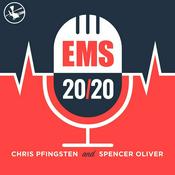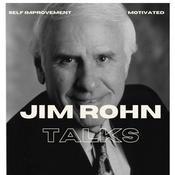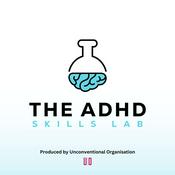544 episodes

FTC Labels ABA a Monopoly (Ep. 537)
12/15/2025 | 1h 30 mins.
The FTC submitted a letter to the Texas Supreme Court supporting its decision to drop the ABA as the state’s official accreditor. Ben and Nathan agree that the ABA has been slow to modernize and often lags behind student needs, but they don’t fully align with the FTC’s reasoning. Also in this episode:- A listener asks whether to choose a part-time or full-time law program.- Whether to cancel an official score that comes in lower than a prior LSAT.- A personal statement with an unusually bold opening.Links Mentioned:FTC Letter to Texas Supreme CourtStudy with our Free PlanDownload our iOS appWatch Episode 537 on YouTubeCheck out all of our “What’s the Deal With” segmentsGet caught up with our Word of the Week libraryQuestions? [email protected]:00 When to Take Practice Tests6:11 FTC Claims the ABA is a Monopoly21:43 Full-Time vs. Part-Time Law Programs29:47 Tips from Departing Demons35:02 Performing Worse on the First Section43:19 Cancelling a Lower Score46:45 Personal Statement Gong Show

The One-Point Difference (Ep. 536)
12/08/2025 | 1h 4 mins.
Ben and Nathan dig into a striking chart showing dozens of schools clustering their LSAT medians at 150 and 160, while almost nobody reports 149 or 159. They break down why schools chase these round-number medians, how it leads to irrational admissions behavior, and what it means for applicants trying to play the rankings game.Also in this episode:- How applying without a GPA can affect your admissions chances- Success stories from Demon students who crushed the November LSAT- Why the University of North Carolina has climbed so quickly in the rankingsLinks Mentioned:Derek T. Muller ArticleStudy with our Free PlanDownload our iOS appWatch Episode 536 on YouTubeCheck out all of our “What’s the Deal With” segmentsGet caught up with our Word of the Week library0:00 Retaking to Beat New Medians5:37 Applying with No GPA14:05 November LSAT Success20:05 The Irrational Pursuit of Round LSAT Medians27:20 Lower Scores When Timed34:50 Meeting with an Admissions Counselor39:35 What’s the Deal with University of North Carolina55:56 Word of the Week — Prolixity

How to Take Your Last LSAT (Ep. 535)
12/01/2025 | 1h 4 mins.
A listener writes in asking how to handle the pressure of their final official LSAT attempt. Ben and Nathan remind them that their highest score on record, a 165, is already strong enough for full scholarships at many law schools. They encourage the listener to let go of perfectionism, be comfortable with not finishing a section, and approach test day expecting incremental improvement.Also in this episode:- An update on an LSAC cheating allegation- Ben and Nathan react to the ABA lifting its probation of Cooley Law- Advice from Demon students who recently crushed the LSATStudy with our Free PlanDownload our iOS appWatch Episode 535 on YouTubeCheck out all of our “What’s the Deal With” segmentsGet caught up with our Word of the Week library0:00 Update on Cheating Allegations5:24 ABA Lifts Probation for Cooley10:50 How to Approach Your Last Official Attempt21:44 Tips from Departing Demons34:25 Chances at a T14 as a Super kJD41:10 Pearls vs. Turds43:27 Personal Statement Gong Show57:12 Word of the Week — Percolation

Law School Lowballs (Ep. 534)
11/24/2025 | 1h 45 mins.
A listener writes in after a disappointing first round of scholarship offers. Ben and Nathan explain that initial offers are rarely a school’s best, they’re just the starting point. They reassure the listener that more and better offers are still on the way.Also in this episode:- Whether taking the January LSAT is too late to apply this cycle- Questions about Harvard’s Junior Deferral Program- A deeper look at one of the newest members of the T14: WashULinks Mentioned:Derek T. Muller ArticleStudy with our Free PlanDownload our iOS appWatch Episode 534 on YouTubeCheck out all of our “What’s the Deal With” segmentsGet caught up with our Word of the Week library0:00 - Is the January LSAT Too Late?23:45 - Receiving Bad Scholarships 35:24 - When Do I Know When I’m Ready?43:05 - Follow–Up on Cheating45:18 - Harvard’s Junior Deferral Program1:07:45 - Demon Team Tracker1:09:19 - What’s the Deal with… WashU1:36:54 - Word of the Week — Propinquity

Retaking a 173 (Ep. 533)
11/17/2025 | 1h 9 mins.
A listener writes in asking whether they should retake a 173, worried that a future attempt could be lower. Ben and Nathan explain why they should be willing to use all four remaining attempts: law schools only care about your highest score, and every point, especially for higher scores, can turn into thousands of dollars. Also in this episode:- When applicants can expect scholarship responses from law schools- Advice from Demon students who crushed the LSAT- Another brave contestant steps up for the Personal Statement Gong ShowLinks Mentioned:https://lsat.link/gradesStudy with our Free PlanDownload our iOS appWatch Episode 533 on YouTubeCheck out all of our “What’s the Deal With” segmentsGet caught up with our Word of the Week library0:00 - Following the Demon Way3:30 - When Will I Hear Back on Scholarships?9:31 - Medians Above 4.0024:25 - Tips from Deparing Demons31:40 - Should I Retake a 173?36:35 - Light at the End of the Tunnel50:56 - Personal Statement Gong Show1:05:23 - Word of the Week — Anachronism
More Education podcasts
Trending Education podcasts
About Thinking LSAT
Listen to Thinking LSAT, Impact with Eddie Wilson and many other podcasts from around the world with the radio.net app

Get the free radio.net app
- Stations and podcasts to bookmark
- Stream via Wi-Fi or Bluetooth
- Supports Carplay & Android Auto
- Many other app features
Get the free radio.net app
- Stations and podcasts to bookmark
- Stream via Wi-Fi or Bluetooth
- Supports Carplay & Android Auto
- Many other app features


Thinking LSAT
download the app,
start listening.







































